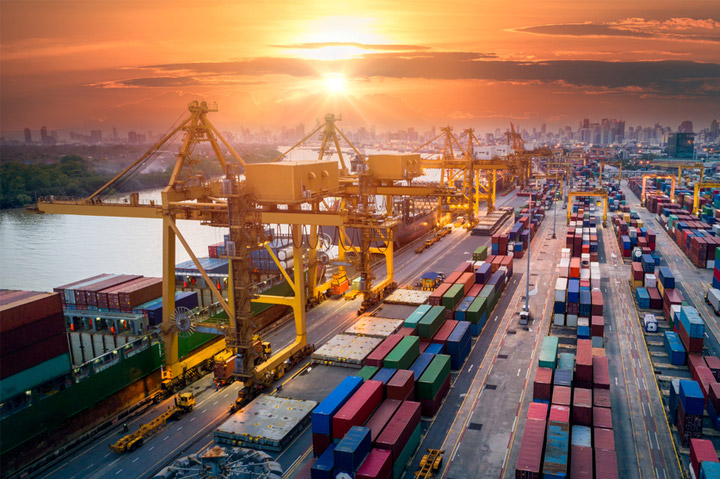News February 24, 2022
USDOT Releases Report on Improving Supply Chain
Transportation officials have dozens of recommendations for helping overcome supply chain challenges, but the problems that have plagued promo and other industries remain in play.
The U.S. Department of Transportation has released a report that recommends dozens of actions for improving America’s supply chain, with the aim being to make it more resilient, cost-effective and ultimately more efficient in getting “goods from ships to shelves.”
The study provides recommendations that the federal government, Congress, states and private companies can implement to enhance supply chains in the short- and long-term. The report, which will guide DOT’s supply chain work for years to come, calls for investments in physical and digital infrastructure and comes a year after President Joe Biden issued an executive order on addressing supply chain weaknesses.

“This report lays out critically important steps we can take – both right now, and in the years ahead – to help strengthen our supply chains, create good-paying jobs and ensure that Americans can affordably and efficiently access the goods they rely on,” said Transportation Secretary Pete Buttigieg, noting that DOT is getting to work on the recommendations.
Supply chain disruption has been a constant amid the economic rebound that’s occurred following COVID-related societal restrictions that caused the economy to plummet in 2020.
The promotional products industry has keenly felt the upheaval. Troubles like clogged ports, lack of cargo containers, rising container and freight prices, increasing raw-material costs, insufficient domestic transport capacity, inadequate labor levels and more have fueled problems in promo that include inventory shortfalls, higher product prices and longer production/fulfillment times.
One key clog in the supply chain has been backups of ships and containers at major U.S. ports, including Long Beach and Los Angeles – sister ports through which 40% of import cargo containers flow into the U.S. To address the issues, DOT is making available $450 million in grants to pay for improvements like port infrastructure upgrades, constructing new berths, restoring docks and extending rail lines.
Another stick in the spokes of America’s supply chain has been, according to analysts, an insufficient number of truckers to transport goods from ports to warehouses, stores and other final destinations.
To address this reported shortfall, DOT is launching a Trucking Action Plan. It aims to recruit and retain more truck drivers through initiatives like partnering with the Department of Labor on registered apprenticeship programs, a pilot program for truck drivers between the ages of 18-21 that incorporates registered apprenticeships to ensure safety through training standards, driver compensation studies, a driver leasing task force and more. DOT also proposes eliminating a law that exempts trucking companies from paying overtime to drivers, but that would require legislative action.
Additional recommendations in the report include: having DOT coordinate with states, local governments and port authorities, as well as federal partners such as the Department of Defense, to identify temporary solutions to ease congestion, such as “pop-up” intermodal yards; investing in the inland waterway system to enhance its performance and capacity; exploring the potential to increase U.S.-flagged ships, shipping companies and shipbuilding; supporting public and private sharing of cyber-incident data to enhance supply chain cybersecurity; and developing a national freight portal to share key data among stakeholders and an electronic information exchange standard for critical product flow tracking. More recommendations can be reviewed here.
When will the #promoproducts industry's supply chain woes end? What will things be like in 2022? Some quick insights in this short video.@ASI_MBell @Tim_Andrews_ASI @asicentral pic.twitter.com/a1YDo0zyck
— Chris Ruvo (@ChrisR_ASI) January 20, 2022
While the goals are ambitious, sourcing experts in promo expect that supply chain challenges will persist throughout much of 2022. There’s merit to this view: Freightos, an online international freight marketplace, this week reported ocean shipping rates remain “extremely elevated” and are likely to continue to be so. The same goes for port congestion.
Said Freightos: “The ports of LA/Long Beach reported progress in reducing the number of empty containers clogging their container yards by nearly a third so far this year, and the state of California has freed up multiple areas – including former fairgrounds and prison sites – for off-port container storage to ease some of the pressure. But even with these steps, congestion continues to plague Southern California as well as many other major ports across the globe.”
Jeffrey Nanus, CEO of Norwood, NJ-based hard goods promo supplier AAA Innovations (asi/30023), told ASI Media that while ports are in a better position currently than last year, it’s unclear if that relief will last.
“We’re still seeing substantial delays from the steam ship carriers,” Nanus said. “We have experienced continued vessel shortages and container rolling. We plan ocean cargo deliveries to the East Coast at 50-to-55 days now vs. 30-to-33 days historically.”
